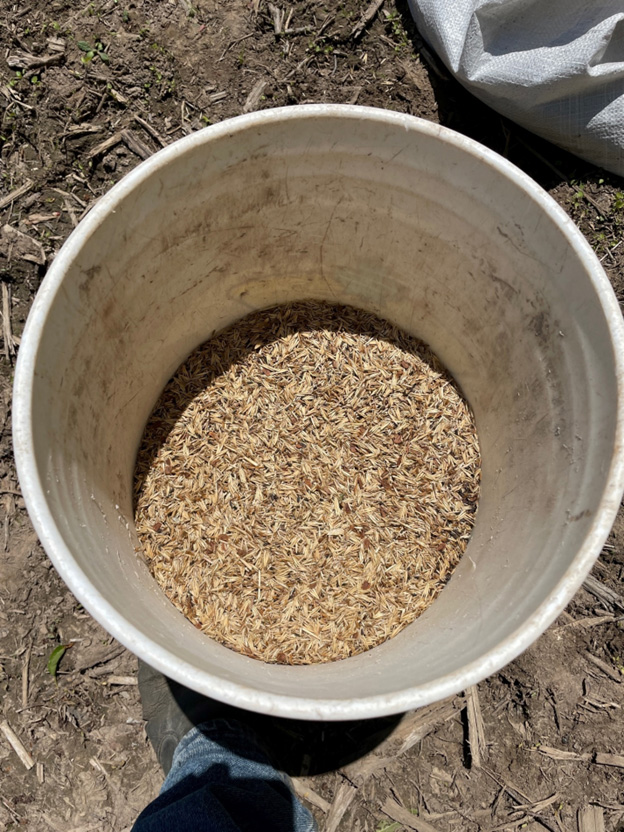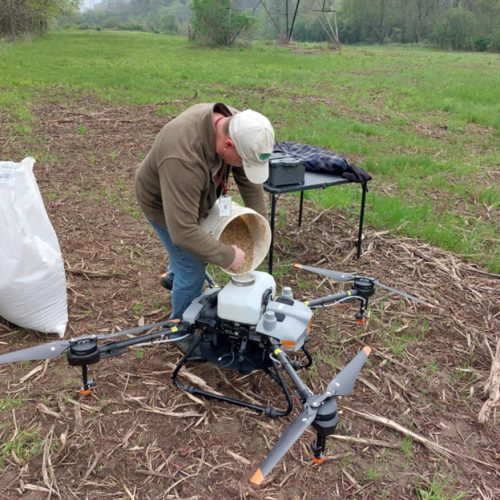| Membership | Price (+HST) |
|---|---|
| Single | $85/year |
| Single Plus | $120/year |
| Family | $130/year |
| Family Plus | $175/year |
| Contributing | $300/year |
| Supporting | $600/year |
| Sustaining | $1,000/year |
| Benefactor's Circle | $2,500/year |
| Director's Circle | $5,000/year |
| President's Circle | $10,000/year |
New Technology & Grassland Restoration
By Tys Theysmeyer, Head of Natural Lands, Royal Botanical Gardens.
The team from the Unmanned and Remote Sensing Innovation Centre at Mohawk College had another great day with the team from Royal Botanical Gardens this week!
The Project: How do you promote the regeneration of native grassland species after the brush has been cleared under regional high voltage lines crossing the RBG Cootes Paradise property (i.e. a hydro corridor)?
These areas need to be managed as grass or shrubby areas to keep the trees from contacting the high voltage wires, and so working with native grasslands species and wildflowers is and ecologically sustainable way to go. The solution starts with a custom native species grade pollinator seed from St. Williams Nursery & Ecology Centre, however these hydro corridor areas are often rugged and semi remote.


It was a hot, muggy spring day, the ground covered with woody matter from the corridor maintenance work by hydro, ruts everywhere, and 4 hectares need to be re-seeded. Hand seeding is tedious work, and nobody wants to roll an ankle to spread some seed. The solution: an experimental pilot project to work with an agricultural drone in a new situation and with unusual seed types.
The remotely piloted aircraft (RPA) is a DJI Agras T10 outfitted with a spreader system from OmniView Tech. We had to work through the challenges finding the right spreader template, a result of the lightness and diversity of seed sizes in the native seed mix. After a hour of experimentation we found that the “rice” setting at 250 kg/ha (i.e. hopper open 30%) worked well (forward speed at 6 km/hr, spreader spin rate at 400 RPM).
The actual coverage of seed was ~9kg/ha since the seed was lightweight and not as smooth as rice which would have fallen at 250kg/ha on these settings, but coverage was fantastic! We loaded the seed into remotely piloted aircraft (RPA), then sat back and let the drone do all the work! Exactly 2 hour later, the job was done with only two people on site! We are looking forward to a more sustainable grassland habitat in the coming years.
Special thanks to the Kenneth Molson Foundation for their continued support in promoting innovation options with this new drone through Mohawk college and Royal Botanical Gardens.
More from the RBG Blog
Check out RBG’s blog for announcements, articles, and more from Canada’s largest botanical garden.
Want to be sure you hear first? Sign up for our weekly e-newsletter to hear about upcoming events, weekend activities, articles, and more!












